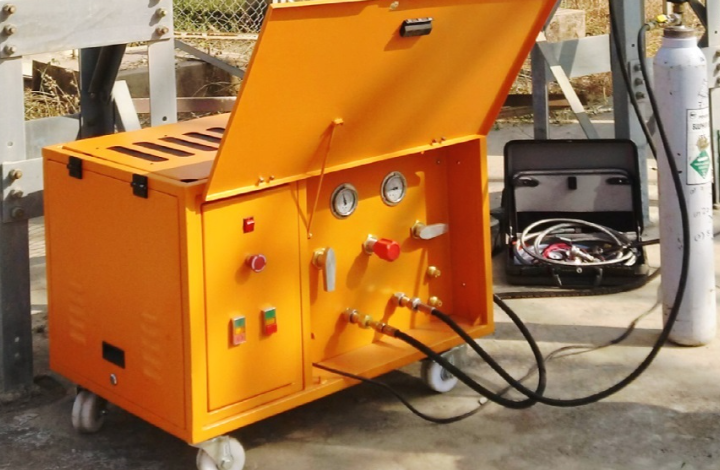Sf6 gas handling equipment overview

Introduction
SF6 gas is widely used in the electrical power industry due to its superior insulating and arc-quenching properties. It is commonly found in high-voltage switchgear, circuit breakers, and other electrical apparatus. However, because sf6 gas is a potent greenhouse gas, its handling requires specialized equipment to ensure safety, prevent leaks, and minimize environmental impact. This article provides an in-depth overview of sf6 gas handling equipment, their functions, importance, and applications.
Importance of sf6 gas handling equipment
Handling sf6 gas safely and efficiently is critical for several reasons:
- Environmental protection: SF6 has a high global warming potential. Proper handling equipment prevents leaks and emissions into the atmosphere.
- Equipment longevity: Maintaining the purity of sf6 gas ensures reliable operation and extends the life of electrical components.
- Safety: Specialized equipment protects personnel from exposure to sf6 gas during maintenance or repair.
- Regulatory compliance: Many jurisdictions mandate strict controls on sf6 gas handling to reduce environmental risks.
Using appropriate sf6 gas handling equipment is essential to address these factors.
Types of sf6 gas handling equipment
Several types of equipment are used in the management and maintenance of sf6 gas systems:
gas recovery units
These units capture sf6 gas released during maintenance or decommissioning. They vacuum the gas from equipment, compress it, and store it in cylinders for reuse or proper disposal.
gas filling and refilling systems
Used to inject sf6 gas into electrical equipment, these systems ensure accurate and controlled filling, maintaining the required gas pressure and purity.
vacuum pumps
Vacuum pumps evacuate gas compartments before refilling to remove air and moisture, improving gas quality and insulation performance.
gas analyzers
Gas analyzers measure the purity and composition of sf6 gas, detecting contaminants such as moisture, oxygen, or decomposition products.
leak detectors
Sensitive devices used to identify and locate sf6 gas leaks quickly, enabling prompt repairs and reducing emissions.
gas storage cylinders
Specially designed cylinders store sf6 gas safely, allowing for transportation and secure containment.
See also: Reliable Solutions from a Nuts Manufacturer
Working principle of sf6 gas handling equipment
Most sf6 gas handling equipment operates by creating a sealed environment to control gas flow, pressure, and purity. For example, a gas recovery unit uses vacuum suction to extract sf6 gas from electrical apparatus. The gas is then compressed into storage cylinders. Gas filling systems reverse this process by releasing controlled amounts of sf6 gas into equipment.
Vacuum pumps remove unwanted air and moisture before filling, while gas analyzers monitor gas quality continuously during the process. Leak detectors use sensors to detect sf6 gas concentrations in the environment, alerting operators to any escape points.
Applications of sf6 gas handling equipment
SF6 gas handling equipment is used extensively in:
- Power generation plants: For routine maintenance and refilling of switchgear and transformers.
- Electrical substations: To manage gas in high-voltage equipment ensuring operational safety.
- Manufacturing and testing facilities: For assembly, testing, and quality control of sf6 gas-insulated devices.
- Recycling and reclamation centers: Where used sf6 gas is recovered and purified for reuse.
- Research and development: In laboratories working on alternative insulating gases or gas management technologies.
Benefits of using specialized sf6 gas handling equipment
environmental benefits
Minimizing sf6 gas emissions helps reduce greenhouse gas effects, supporting environmental conservation efforts.
operational efficiency
Accurate gas handling prevents equipment failures caused by contaminated or insufficient sf6 gas.
cost savings
Reusing recovered sf6 gas reduces the cost of purchasing new gas and lowers waste disposal expenses.
safety improvements
Equipment designed for sf6 gas handling reduces exposure risks for workers and limits accident potential.
Maintenance and safety considerations
To maximize the lifespan and effectiveness of sf6 gas handling equipment:
- Regularly inspect and calibrate gas analyzers and leak detectors.
- Replace filters and seals to prevent contamination and leaks.
- Ensure vacuum pumps and compressors are serviced according to manufacturer recommendations.
- Train personnel on proper equipment operation and emergency procedures.
- Store gas cylinders securely in ventilated areas away from heat sources.
Adhering to these practices enhances safety and compliance.
Recent advancements in sf6 gas handling equipment
Technological progress has improved sf6 gas handling tools through:
- Automation: Smart control systems for precise gas management and reduced human error.
- Portability: Compact, lightweight units for on-site and remote operations.
- Enhanced sensitivity: Advanced leak detectors with lower detection thresholds.
- Integration with digital platforms: IoT-enabled devices allowing remote monitoring and data analysis.
- Eco-friendly designs: Equipment that supports the transition to alternative gases and reduces environmental impact.
These innovations make sf6 gas handling safer and more efficient.
Conclusion
Proper sf6 gas handling equipment is indispensable for managing the environmental and safety challenges posed by sulfur hexafluoride. These tools ensure the gas is handled, recovered, and maintained with minimal loss and contamination, extending equipment life and complying with regulatory requirements. As the electrical industry evolves, investing in advanced sf6 gas handling equipment is critical for sustainable and safe power system operations.







